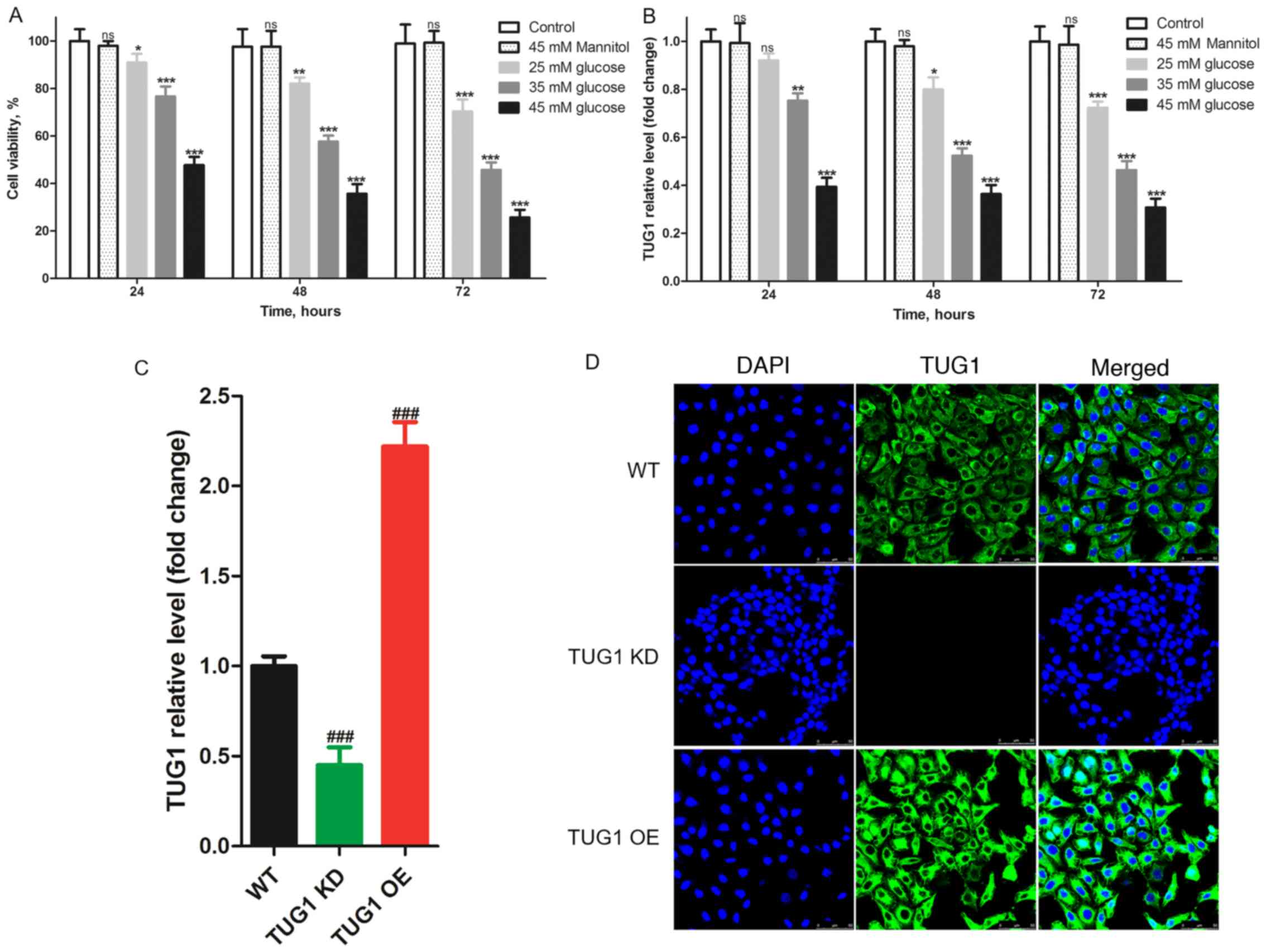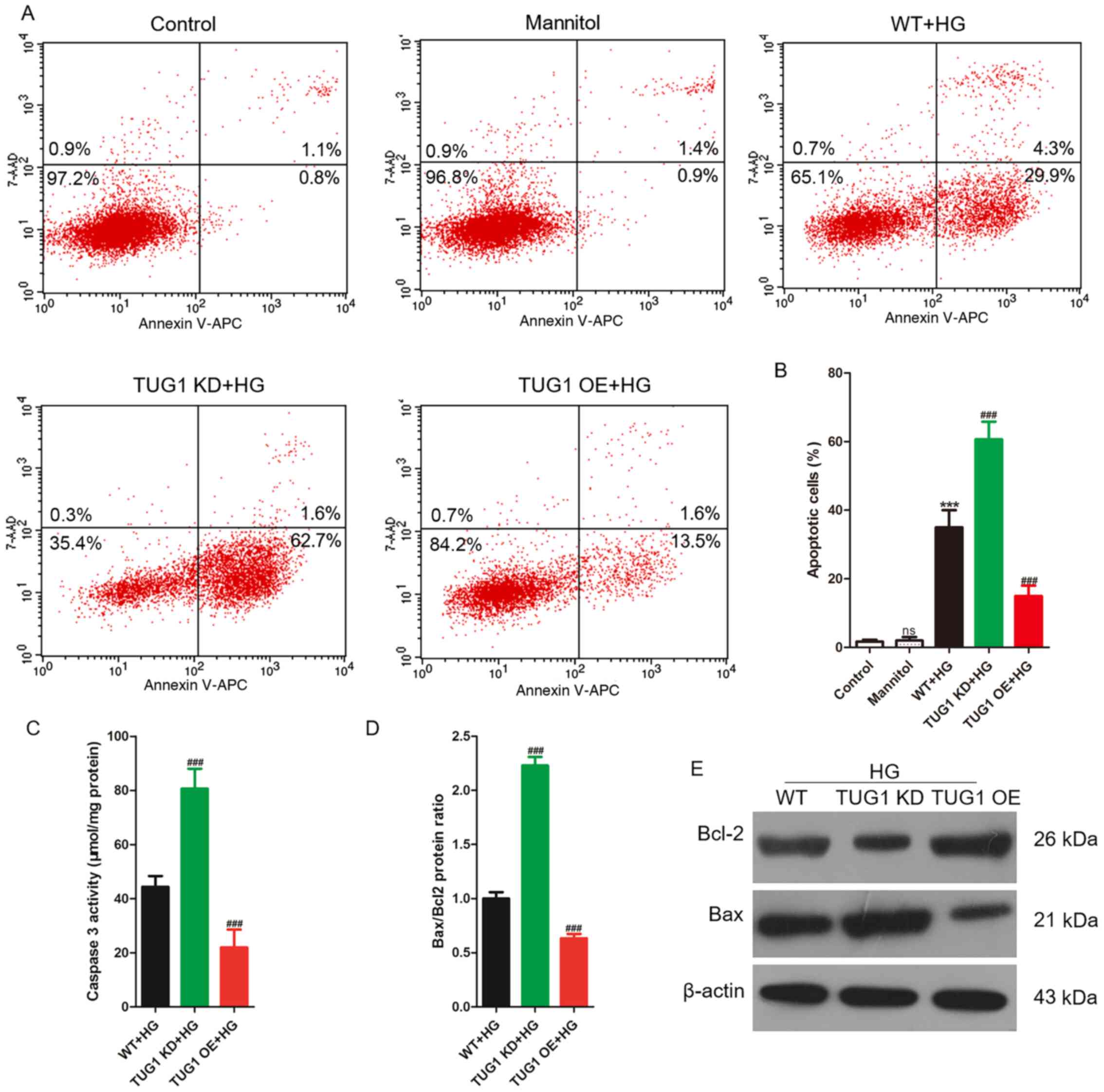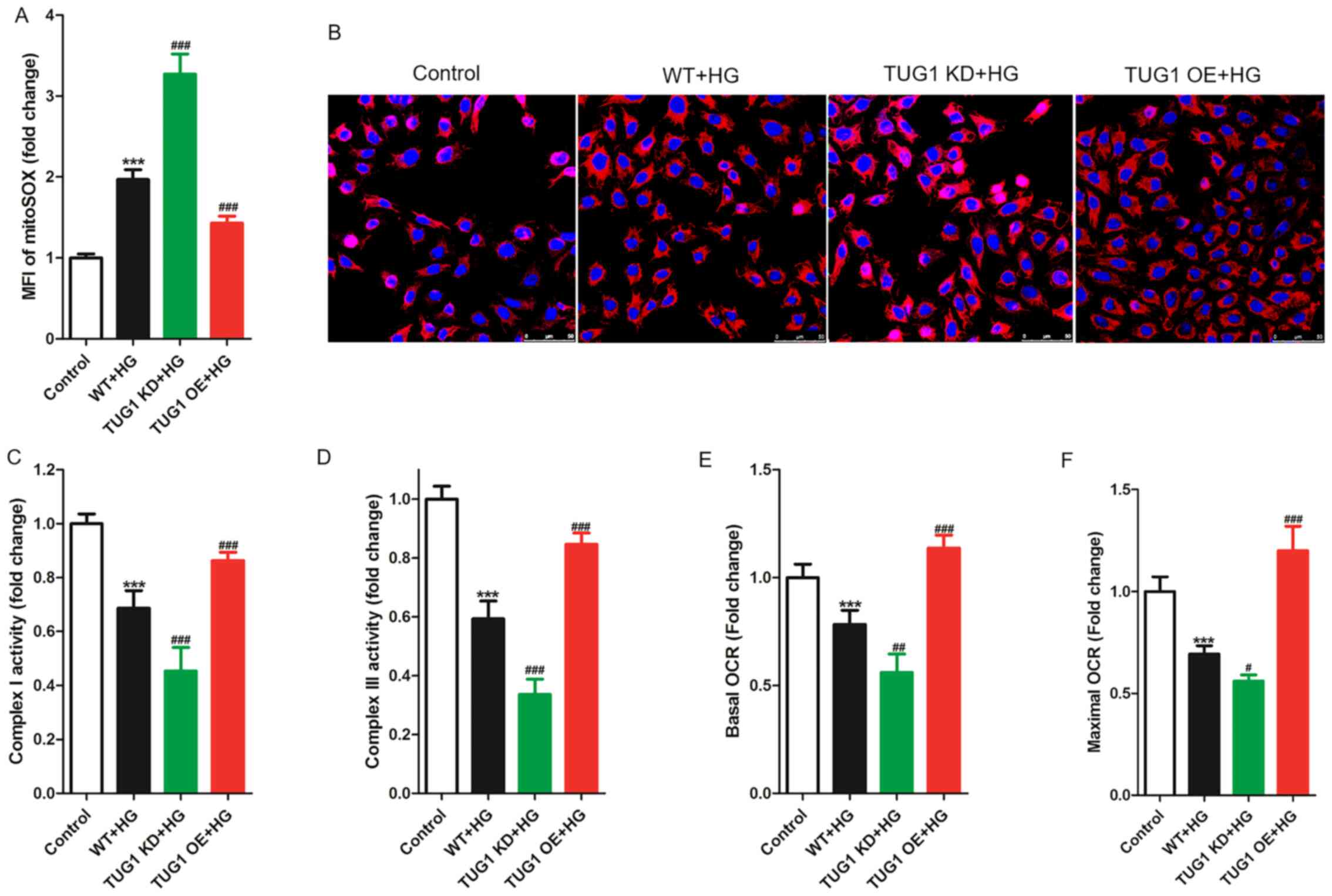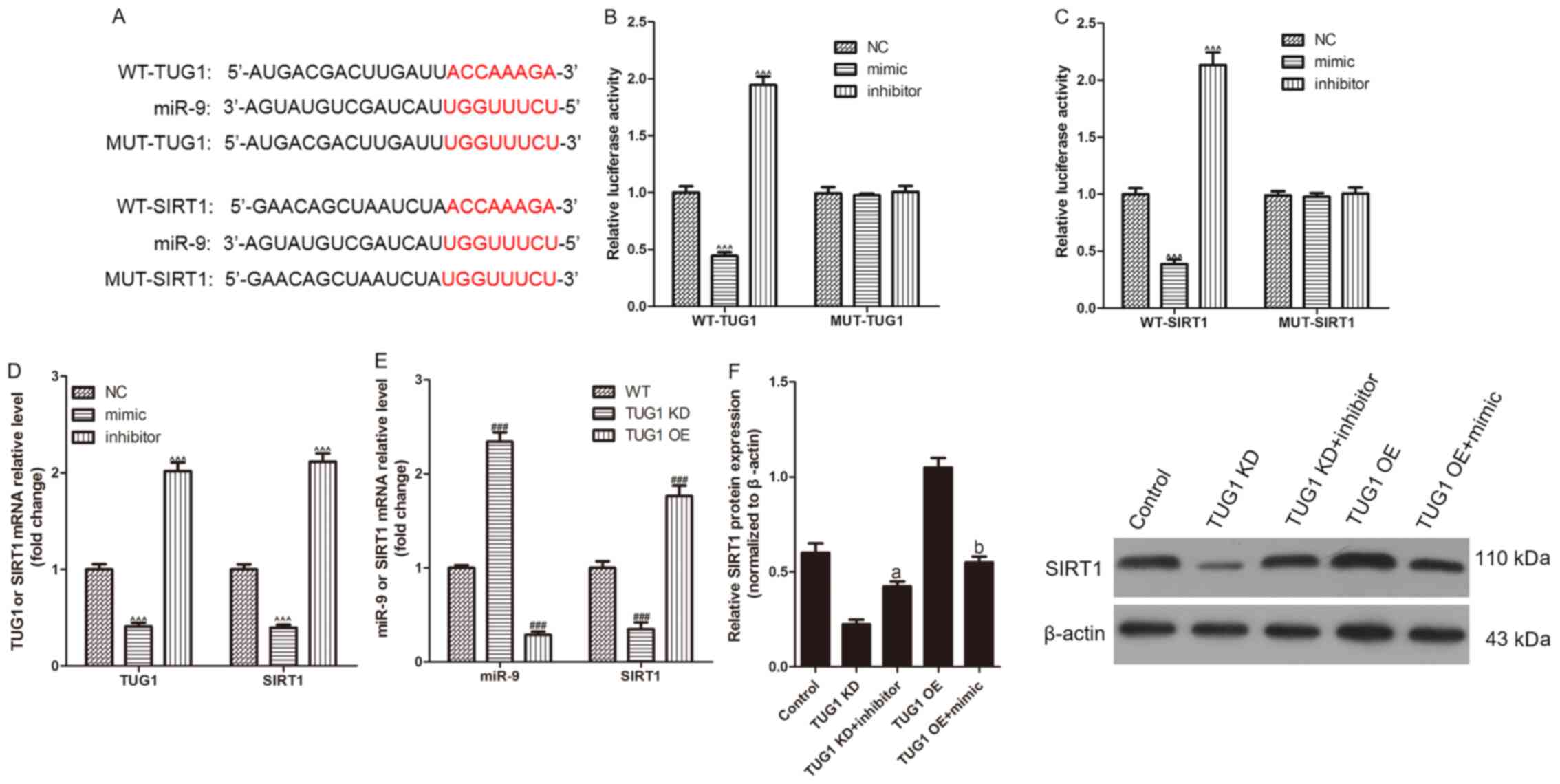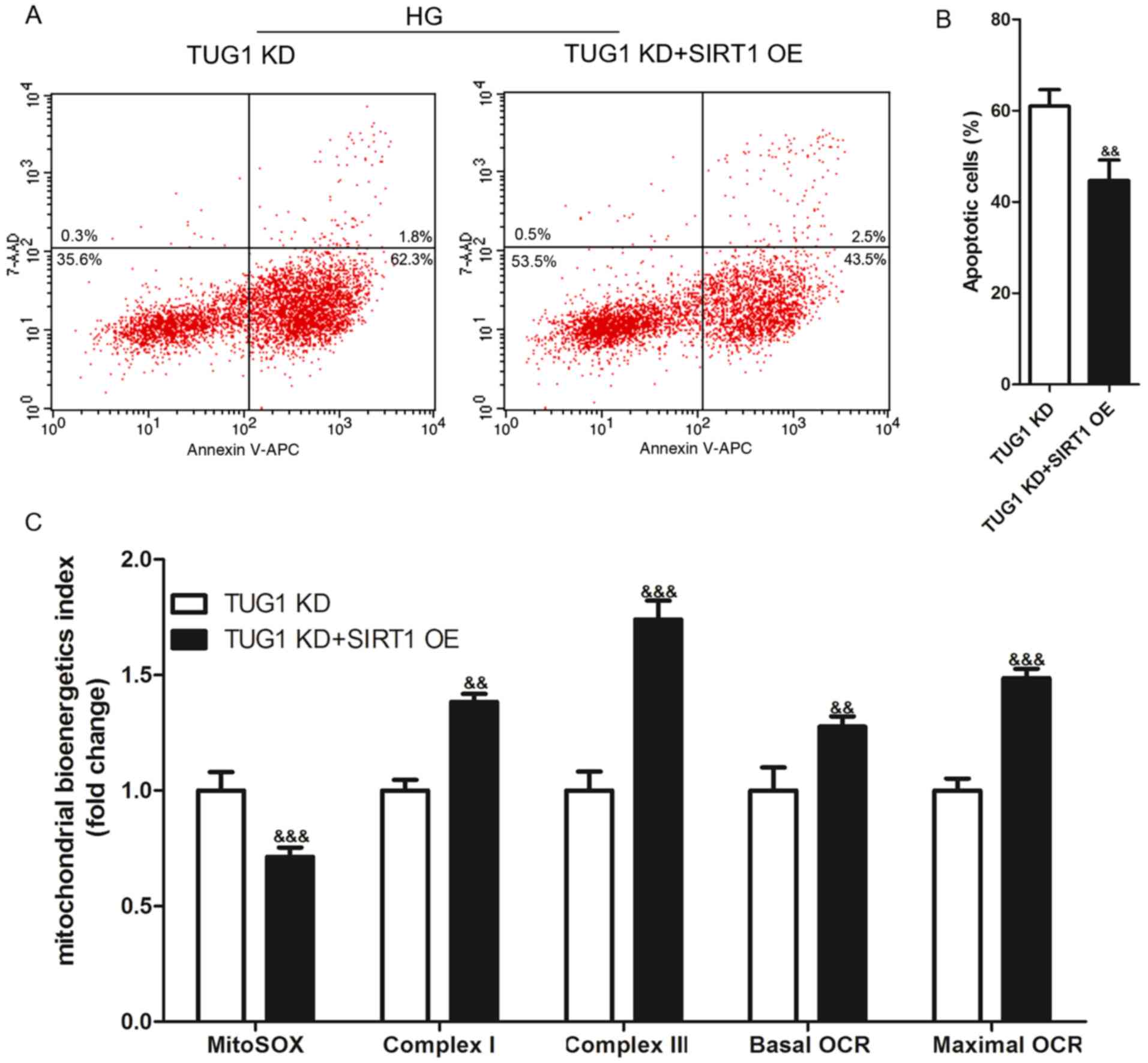|
1
|
Alicic RZ, Rooney MT and Tuttle KR:
Diabetic kidney disease: Challenges, progress, and possibilities.
Clin J Am Soc Nephrol. 12:2032–2045. 2017.PubMed/NCBI View Article : Google Scholar
|
|
2
|
Altintas MM and Reiser J: Podocytes: Way
to Go. Am J Pathol. 189:226–228. 2019.PubMed/NCBI View Article : Google Scholar
|
|
3
|
Lin JS and Susztak KJ: Podocytes: the
weakest link in diabetic kidney disease? Curr Diab Rep.
16(45)2016.PubMed/NCBI View Article : Google Scholar
|
|
4
|
Forbes JM and Thorburn DR: Mitochondrial
dysfunction in diabetic kidney disease. Nat Rev Nephrol.
14:291–312. 2018.PubMed/NCBI View Article : Google Scholar
|
|
5
|
Wei PZ and Szeto CC: Mitochondrial
dysfunction in diabetic kidney disease. Clin Chim Acta.
496:108–116. 2019.PubMed/NCBI View Article : Google Scholar
|
|
6
|
Piwkowska A, Rogacka D, Jankowski M,
Dominiczak MH, Stepiński JK and Angielski S: Metformin induces
suppression of NAD (P) H oxidase activity in podocytes. Biochem
Biophys Res Commun. 393:268–273. 2010.PubMed/NCBI View Article : Google Scholar
|
|
7
|
Lee SH, Moon SJ, Paeng J, Kang HY, Nam BY,
Kim S, Kim CH, Lee MJ, Oh HJ, Park JT, et al: Podocyte hypertrophy
precedes apoptosis under experimental diabetic conditions.
Apoptosis. 20:1056–1071. 2015.PubMed/NCBI View Article : Google Scholar
|
|
8
|
Long J, Badal SS, Ye Z, Wang Y, Ayanga BA,
Galvan DL, Green NH, Chang BH, Overbeek PA and Danesh FR: Long
noncoding RNA Tug1 regulates mitochondrial bioenergetics in
diabetic nephropathy. J Clin Invest. 126:4205–4218. 2016.PubMed/NCBI View
Article : Google Scholar
|
|
9
|
Yue P, Jing L, Zhao X, Zhu H and Teng J:
Down-regulation of taurine-up-regulated gene 1 attenuates
inflammation by sponging miR-9-5p via targeting NF-κB1/p50 in
multiple sclerosis. Life Sci. 233(116731)2019.PubMed/NCBI View Article : Google Scholar
|
|
10
|
Hong Q, Zhang L, Das B, Li Z, Liu B, Cai
G, Chen X, Chuang PY, He JC and Lee K: Increased podocyte Sirtuin-1
function attenuates diabetic kidney injury. Kidney Int.
93:1330–1343. 2018.PubMed/NCBI View Article : Google Scholar
|
|
11
|
Zhang Y, Chang B, Zhang J and Wu X: LncRNA
SOX2OT alleviates the high glucose-induced podocytes injury through
autophagy induction by the miR-9/SIRT1 axis. Exp Mol Pathol.
110(104283)2019.PubMed/NCBI View Article : Google Scholar
|
|
12
|
Cai X, Bao L, Ren J, Li Y and Zhang Z:
Grape seed procyanidin B2 protects podocytes from high
glucose-induced mitochondrial dysfunction and apoptosis via the
AMPK-SIRT1-PGC-1α axis in vitro. Food Funct. 7:805–815.
2016.PubMed/NCBI View Article : Google Scholar
|
|
13
|
Lei X, Zhang L, Li Z and Ren J:
Astragaloside IV/lncRNA-TUG1/TRAF5 signaling pathway participates
in podocyte apoptosis of diabetic nephropathy rats. Drug Des Devel
Ther. 12:2785–2793. 2018.PubMed/NCBI View Article : Google Scholar
|
|
14
|
Chen J, Gui D, Chen Y, Mou L, Liu Y and
Huang J: Astragaloside IV improves high glucose-induced podocyte
adhesion dysfunction via alpha3beta1 integrin upregulation and
integrin-linked kinase inhibition. Biochem Pharmacol. 76:796–804.
2008.PubMed/NCBI View Article : Google Scholar
|
|
15
|
Livak KJ and Schmittgen TD: Analysis of
relative gene expression data using real-time quantitative PCR and
the 2(-ΔΔC(T)) method. Methods. 25:402–408. 2001.PubMed/NCBI View Article : Google Scholar
|
|
16
|
Chen ZZ, Huang L, Wu YH, Zhai WJ and Gao
YF: LncSox4 promotes the self-renewal of liver tumour-initiating
cells through Stat3-mediated Sox4 expression. Nat Commun.
7(12598)2016.PubMed/NCBI View Article : Google Scholar
|
|
17
|
Jie Tao J, Zhang J, Ling Y, McCall CE and
Liu TF: Mitochondrial Sirtuin 4 resolves immune tolerance in
monocytes by rebalancing glycolysis and glucose oxidation
homeostasis. Front Immunol. 9(419)2018.PubMed/NCBI View Article : Google Scholar
|
|
18
|
Long J, Badal SS, Ye Z, Wang Y, Ayanga BA,
Galvan DL, Green NH, Chang BH, Overbeek PA and Danesh FR: Long
noncoding RNA Tug1 regulates mitochondrial bioenergetics in
diabetic nephropathy. J Clin Invest. 126:4205–4218. 2016.PubMed/NCBI View
Article : Google Scholar
|
|
19
|
Maestroni S and Zerbini G: Glomerular
endothelial cells versus podocytes as the cellular target in
diabetic nephropathy. Acta Diabetol. 55:1105–1111. 2018.PubMed/NCBI View Article : Google Scholar
|
|
20
|
Shang X, Ji X, Dang J, Wang L, Sun C, Liu
K, Sik A and Jin M: α-asarone induces cardiac defects and QT
prolongation through mitochondrial apoptosis pathway in zebrafish.
Toxicol Lett. 324:1–11. 2020.PubMed/NCBI View Article : Google Scholar
|
|
21
|
Yang B, Chen Y and Shi J: Reactive oxygen
species (ROS)-based nanomedicine. Chem Rev. 119:4881–4985.
2019.PubMed/NCBI View Article : Google Scholar
|
|
22
|
Turrens JF: Mitochondrial formation of
reactive oxygen species. J Physiol. 552:335–344. 2003.PubMed/NCBI View Article : Google Scholar
|
|
23
|
Wang S, Cheng M, Zheng X, Zheng L, Liu H,
Lu J, Liu Y and Chen W: Interactions between lncRNA TUG1 and miR-9
modulate the resistance of breast cancer cells to doxorubicin by
regulating eIF5A2. Onco Targets Ther. 13:13159–13170.
2020.PubMed/NCBI View Article : Google Scholar
|
|
24
|
Zhang Y, Chang B, Zhang J and Wu X: LncRNA
SOX2OT alleviates the high glucose-induced podocytes injury through
autophagy induction by the miR-9/SIRT1 axis. Exp Mol Pathol.
110(104283)2019.PubMed/NCBI View Article : Google Scholar
|
|
25
|
Lagouge M, Argmann C, Gerhart-Hines Z,
Meziane H, Lerin C, Daussin F, Messadeq N, Milne J, Lambert P,
Elliott P, et al: Resveratrol improves mitochondrial function and
protects against metabolic disease by activating SIRT1 and PGC-1α.
Cell. 127:1109–1122. 2006.PubMed/NCBI View Article : Google Scholar
|
|
26
|
Yousuf S, Atif F, Ahmad M, Hoda N, Ishrat
T, Khan B and Islam F: Resveratrol exerts its neuroprotective
effect by modulating mitochondrial dysfunctions and associated cell
death during cerebral ischemia. Brain Res. 1250:242–253.
2009.PubMed/NCBI View Article : Google Scholar
|
|
27
|
Zhao Y, Li H, Fang S, Kang Y, Wu W, Hao Y,
Li Z, Bu D, Sun N, Zhang MQ, et al: NONCODE 2016: an informative
and valuable data source of long non-coding RNAs. Nucleic Acids
Res. 44:D203–D208. 2016.PubMed/NCBI View Article : Google Scholar
|
|
28
|
Ulitsky I: Evolution to the rescue: using
comparative genomics to understand long non-coding RNAs. Nat Rev
Genet. 17:601–614. 2016.PubMed/NCBI View Article : Google Scholar
|
|
29
|
Militti C, Maenner S, Becker PB and
Gebauer F: UNR facilitates the interaction of MLE with the lncRNA
roX2 during Drosophila dosage compensation. Nat Commun.
5(4762)2014.PubMed/NCBI View Article : Google Scholar
|
|
30
|
Rinn JL and Chang HY: Long noncoding RNAs:
molecular modalities to organismal functions. Annu Rev Biochem.
89:283–308. 2020.PubMed/NCBI View Article : Google Scholar
|
|
31
|
Li SY and Susztak K: The long noncoding
RNA Tug1 connects metabolic changes with kidney disease in
podocytes. J Clin Invest. 126:4072–4075. 2016.PubMed/NCBI View Article : Google Scholar
|
|
32
|
Li Y, Huang D, Zheng L, Cao H, Gao Y,
Yanga Y and Fan Z: Long non-coding RNA TUG1 alleviates high glucose
induced podocyte inflammation, fibrosis and apoptosis in diabetic
nephropathy via targeting the miR-27a-3p/E2F3 axis. RSC Adv.
9:37620–37629. 2019.
|
|
33
|
Lei X, Zhang L, Li Z and Ren J:
Astragaloside IV/lncRNA-TUG1/TRAF5 signaling pathway participates
in podocyte apoptosis of diabetic nephropathy rats. Drug Des Devel
Ther. 12:2785–2793. 2018.PubMed/NCBI View Article : Google Scholar
|
|
34
|
Roger AJ, Muñoz-Gómez SA and Kamikawa R:
The origin and diversification of mitochondria. Curr Biol.
27:R1177–R1192. 2017.PubMed/NCBI View Article : Google Scholar
|















